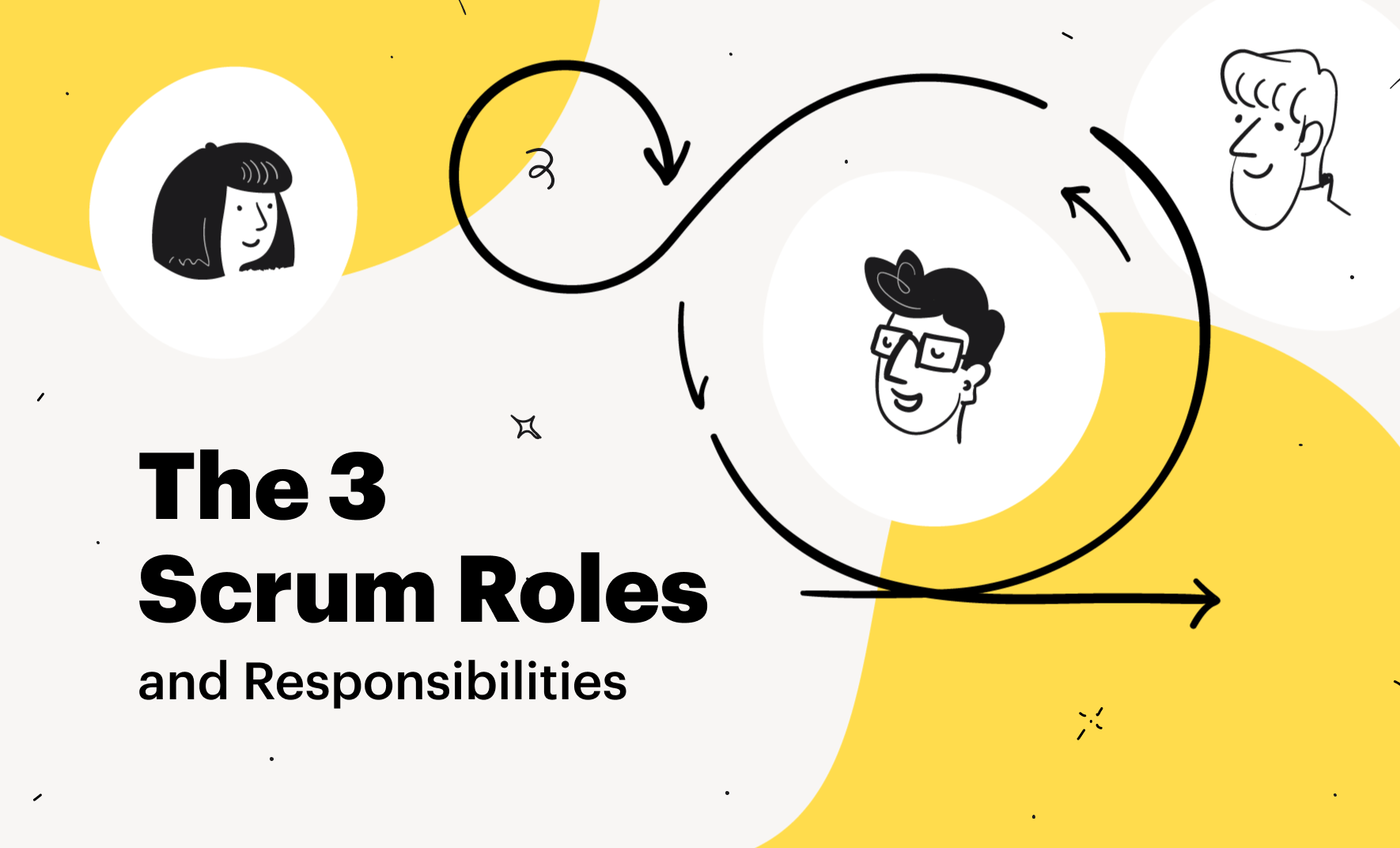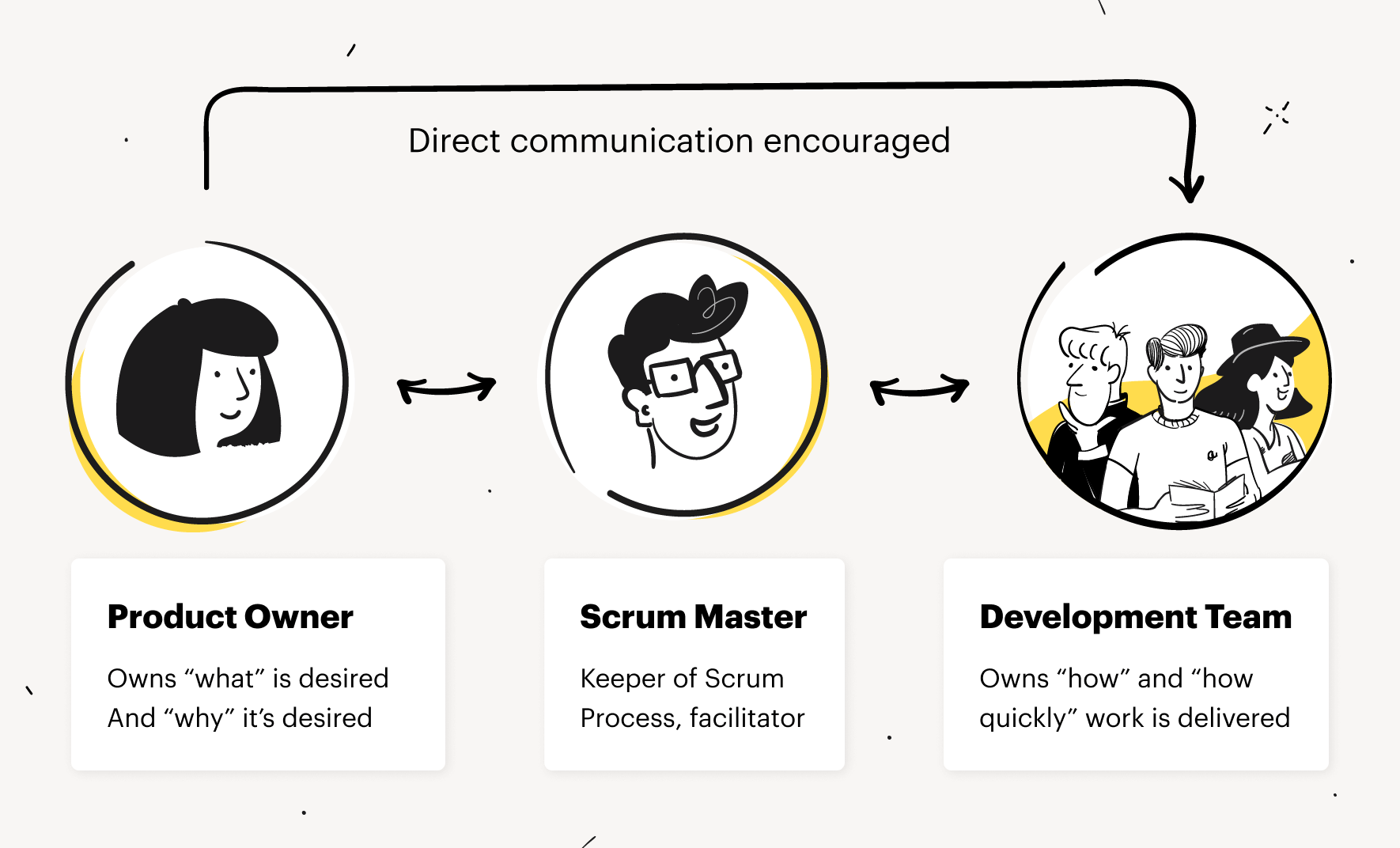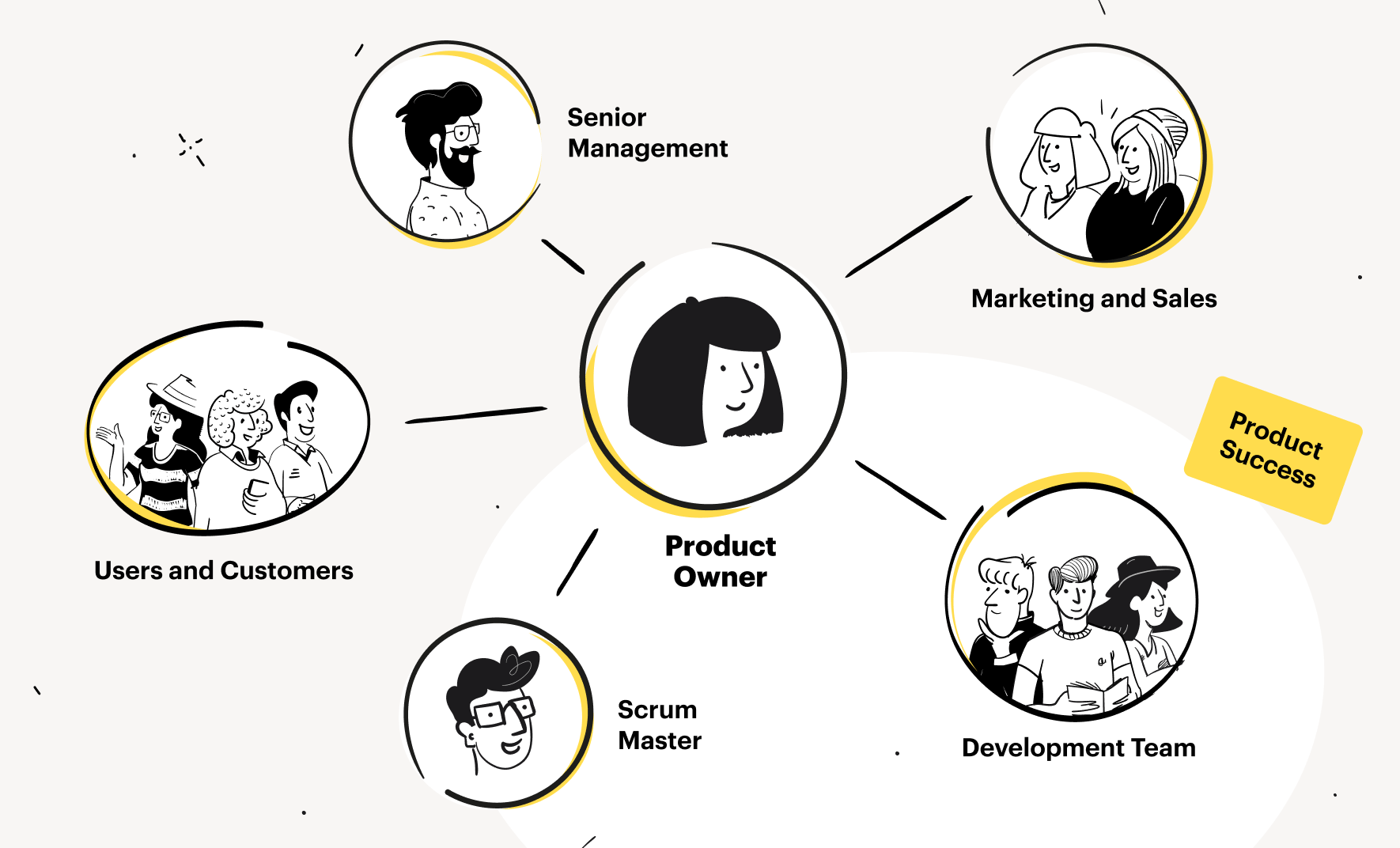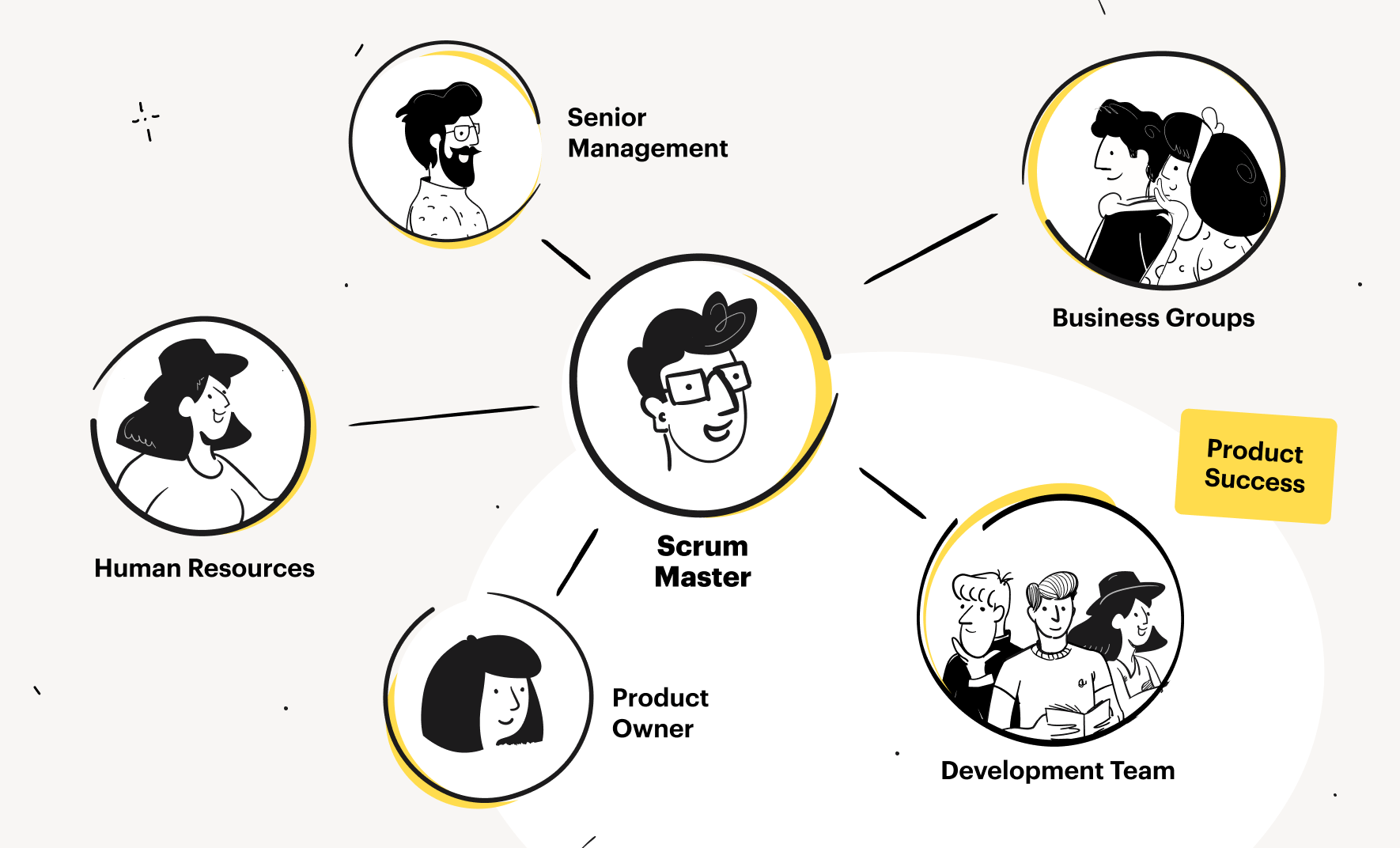The 3 Scrum Roles and Responsibilities Explained in 3 Minutes

Firstly, Scrum is the most popular and widely used form of Agile in software development. Designed by software people for software people. Essentially, it is a practical framework taking the principles and values of Agile and adapting them in order to get rapid, flexible, client-centered results.
What’s different about Scrum?
Where Scrum differs from more traditional software development methods is its assignment of key roles and clearly defined expectations of the different parties involved in the process. There is an emphasis on individual responsibility and self-organization but all within a team framework.
Scrum is, however, essentially a framework and set of guidelines on how to keep the whole team on task and on track to complete a project rather than a concrete path. Whereas, Scrum is great for some projects it may not be as good for others, and it is very dependent on the team member’s motivation and technical abilities. Finally, this communication and interaction is the secret of success.
What are the 3 Scrum team roles?

Assignment of Scrum Roles is essential in Scrum. These are roles taken on during this particular project and not in most cases set job roles. Each role has its own set of responsibilities and is accountable for certain elements but team effort, collaboration, and communication are of utmost importance.
The Scrum Roles are Product Owner, Scrum Master, and Development team.
Role 1: Product Owner

To begin with the Product Owner. The Product Owner in their Scrum Role is the focal point of the customer or client and the link with the Scrum Team. Their Scrum role is to represent the client and embody their ideas and visions into the project itself. In some ways, they are the “ideas man”.
They can have several roles for the overall business but within the team, their scrum role is to establish and identify the product features and prioritize them. this is essential in creating the direction of the whole project.
What are the Product Owner Scrum Role Responsibilities?
- Overall responsibility for the success of the product, including Return on Investment.
- Explaining the vision.
- Identify and Prioritize features.
- Authority to change the scope.
- Authority to change direction, focus, Sprint goals, etc.
- The central point of communication from the product stakeholders.
- Responsible for communicating progress and issues with the product stakeholder.
- Responsibility for providing feedback from Product Stakeholders to Scrummaster.
Role 2: Scrum Master

First and foremost, The Scrum Master’s scrum role is to provide a link between the Product Owner and the Development Team. They are essential in taking the vision and idea of the Product stakeholders, through the Product Owner and adding technical expertise. Whilst the role can be fulfilled by a project manager or team leader, within the particular Scrum, they are more of a facilitator or coach. In addition, they help to organize, and manage blocks, create an environment for team achievement, as well as plan and break down tasks.
To sum up, the Scrum Master should be seen as a kind of coach, educator, guide, or trainer, a figure with authority through Scrum experience and ability, rather than an authoritarian figure.
What are the Scrum Master’s Role and Responsibilities?
Importantly, the Scrum Master ensures everyone follows the practices prescribed by Scrum.
- Provides a practical link between the ideas of the Product Owner and the technical possibilities and realities.
- Maintains the Scrum ethos.
- Sets the Scrum events and processes.
- Plans resources.
- Facilitates collaboration and communication across roles.
- Addresses any development team issues.
- Controls external factors.
- Sets team goals and timelines.
Role 3: Development team

Finally, The Scrum development team is a group of individuals, usually a relatively small group of up to 10. This small but perfectly formed group performs the actual tasks that when put together will complete the project. It is vital that this team is chosen for each specific project as it should contain the required specialists in different areas.
Clearly, as with any large complicated job, there will be different skills needed and a jack of all trades is not what you need. The team should be technically proficient, thrive on responsibility, be highly capable, self-motivated, and additionally have a mixture of specialisms (programmers, designers, analysts writers, developers, testers, etc)
What are the development team Scrum Role Responsibilities?
- Completing the assigned tasks for each Sprint.
- Decision-making regarding Sprints, including input into timelines, deadlines, number of tasks involved, and technical advice.
- Input into planning decisions.
- Self-organization.
- Attend and take an active role in all events and meetings.
Conclusion
Obviously, the term Scrum comes from the sport of Rugby Union. It is a sport where overall success is based on the successful integration of all the different playing positions. A sport where the bigger, more physically powerful players have to protect the smaller, faster ones. In short, without everyone working in harmony, failure is more than likely. The Scrum framework takes its name from this term because it works in exactly the same way. Put simply, individually assigned Scrum Roles, fulfilled by talented individuals who all know their personal responsibilities and work together to complete one overriding goal.